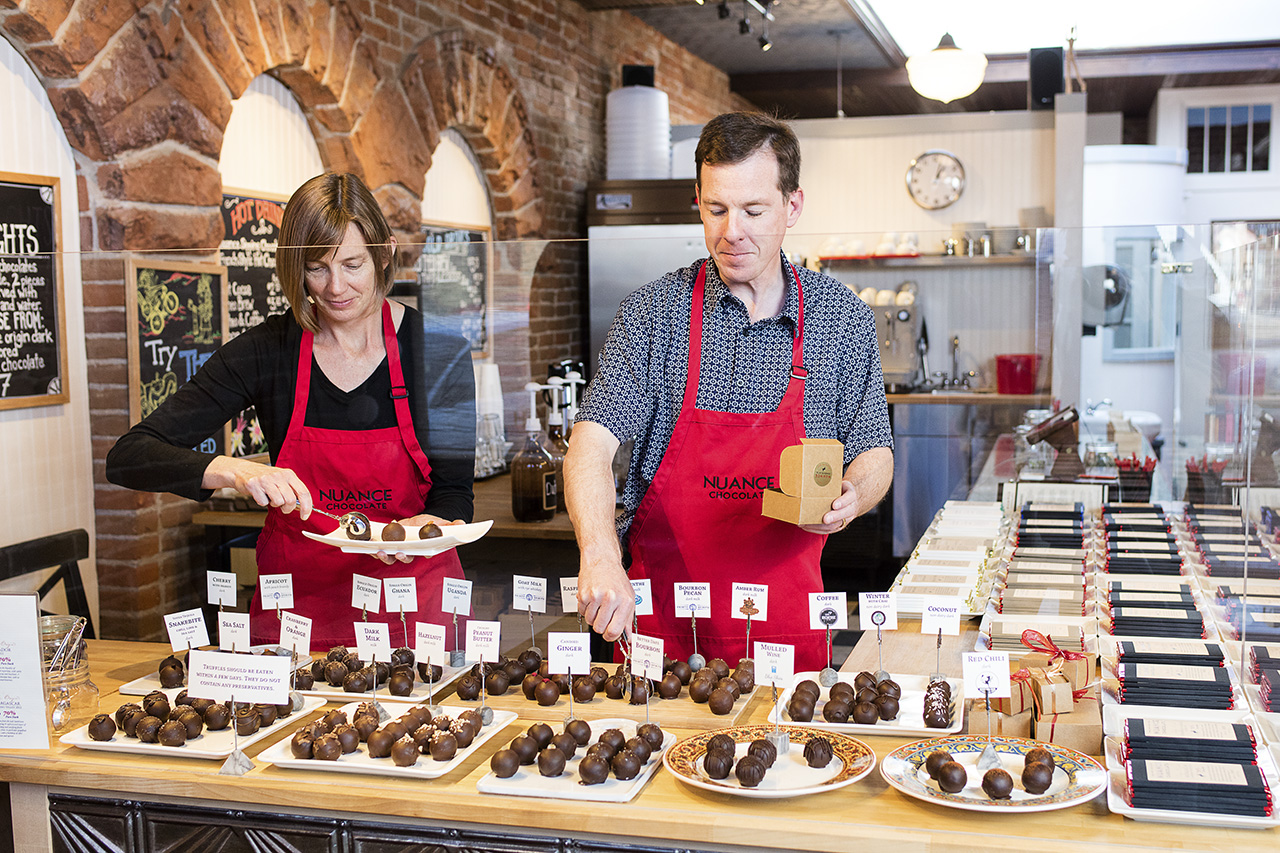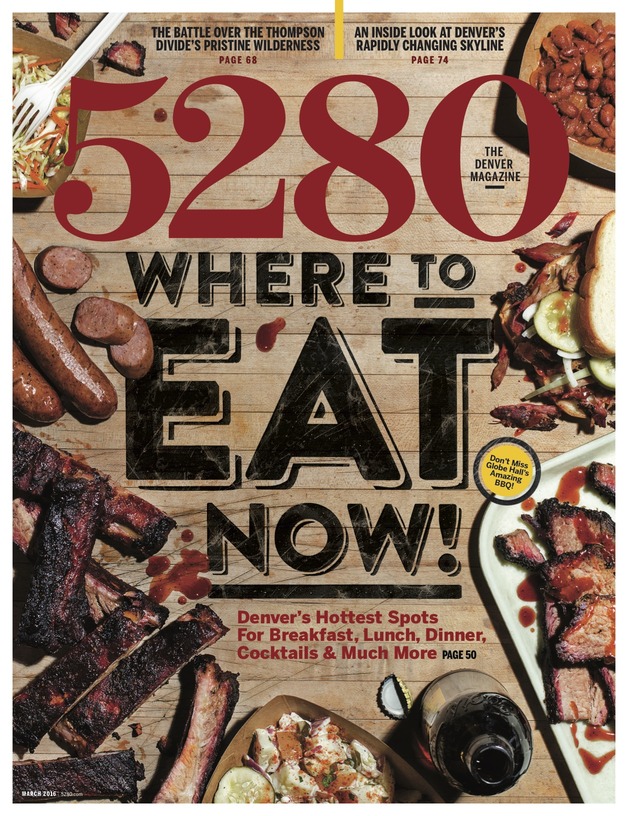The Local newsletter is your free, daily guide to life in Colorado. For locals, by locals.
“Twenty-six seconds,” says Alix Gadd, co-founder of Fort Collins–based Nuance Chocolate, as she rushes toward the roaster. She’s referring to the time left for the cacao beans roasting in the next room—beans that, in a few short days, will become beautifully wrapped bars and truffles sold in Nuance’s nearby shop.
Alix and husband, Toby, began Nuance as a hobby, converting their kitchen into a makeshift chocolate factory after returning from a trip to Costa Rica in 2012. It was there that they first tasted unrefined chocolate; they were smitten. Now, year-and-a-half-old Nuance offers a large variety of single-origin chocolates, with 38 different bars representing 18 countries.
Making chocolate like this is a carefully monitored, demanding undertaking. Here, we follow the cacao bean as it makes the monthlong journey from its country of origin to becoming a delectable Nuance bar.
How the Magic Happens

First Life
Raw cacao beans grow on the Theobroma cacao tree. (“Theobroma” means “food of the gods” in Greek.) The Nerf football–shaped pods are filled with beans and a sweet, sticky mucilage.
The pods’ innards are harvested and set into wooden boxes to ferment for four to five days. This complex chemical process helps develop up to 600 naturally occurring flavor compounds (red wine has around 200) that range from tobacco to vanilla to banana, depending on the variety of the beans.
After fermenting, the beans are laid out to dry, sometimes on sunny patios. One of the beans Nuance sources from Papua New Guinea is fire-dried, which results in a smoky flavor. “Papua New Guinea is usually considered a low-grade bean because of all the effort it takes to eliminate the smoke flavor,” Toby says. “We embrace it, and I think it makes a wonderful bar.”
Once dried, beans are shipped to Nuance’s Fort Collins factory in burlap bags. (Each bag holds approximately 150 pounds of beans.) The contents are then emptied into large barrels for storage.
Transformation
It’s time to hand-sort and roast. Before this stage, the raw, fermented beans don’t quite smell like chocolate. The Gadds roast about 15 pounds at a time at 250 to 350 degrees in order to bring a chocolatey flavor to the forefront.
Toby and Alix put the roasted beans in a machine to be cracked and winnowed, which separates the outer husks from the inner cocoa nibs (the tasty parts). Many companies dispose of the husks, but Nuance repurposes the by-product by sending it to Odell Brewing Co., New Belgium Brewing Company, and Feisty Spirits Distillery to flavor beer and spirits. The nibs then go through a grinder and come out as a peanut buttery substance known as chocolate liquor.
Finally, Chocolate
The Gadds drop the chocolate liquor into stainless steel drums called melangers. The melangers grind and churn the mixture for 70 to 90 hours. The natural flavors and aromas of the chocolate will be fully developed during this crucial stage.
After tempering (a controlled melting and reforming process to achieve the correct texture, gloss, mouthfeel, and melting point), the chocolate is poured into molds. Alix and Toby typically work with 80 molds at a time for each variety of chocolate.
Marc Zemel, one of eight employees at Nuance, wraps the bars by hand in colorful foil and black paper indicating the origin—Ghana, Madagascar, Peru—of the beans. The Gadds then sell the 55-gram bars in the shop for $7 to $15 (depending on the rarity of the beans) and will happily tell the story of the chocolate to anyone who asks.









